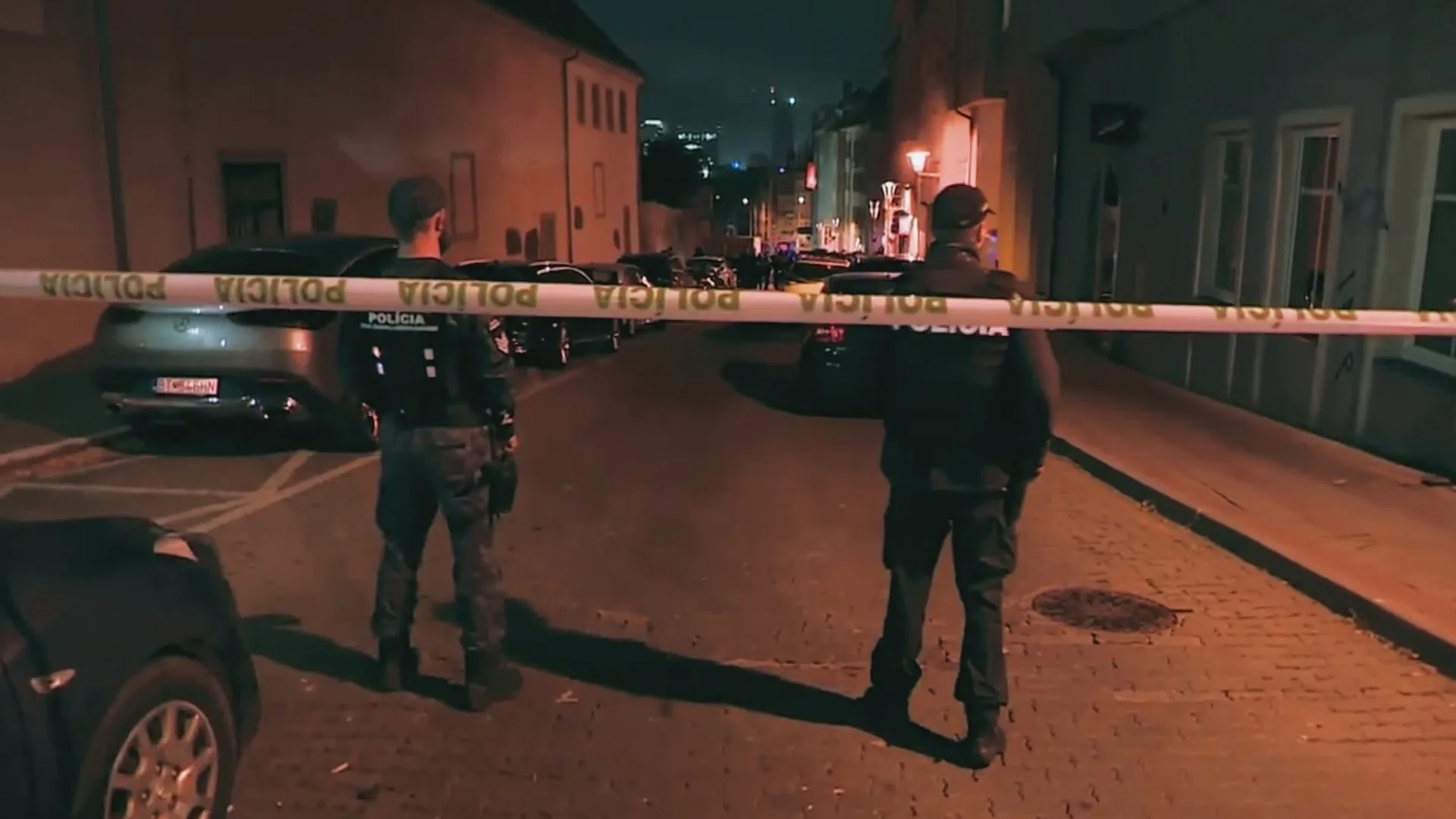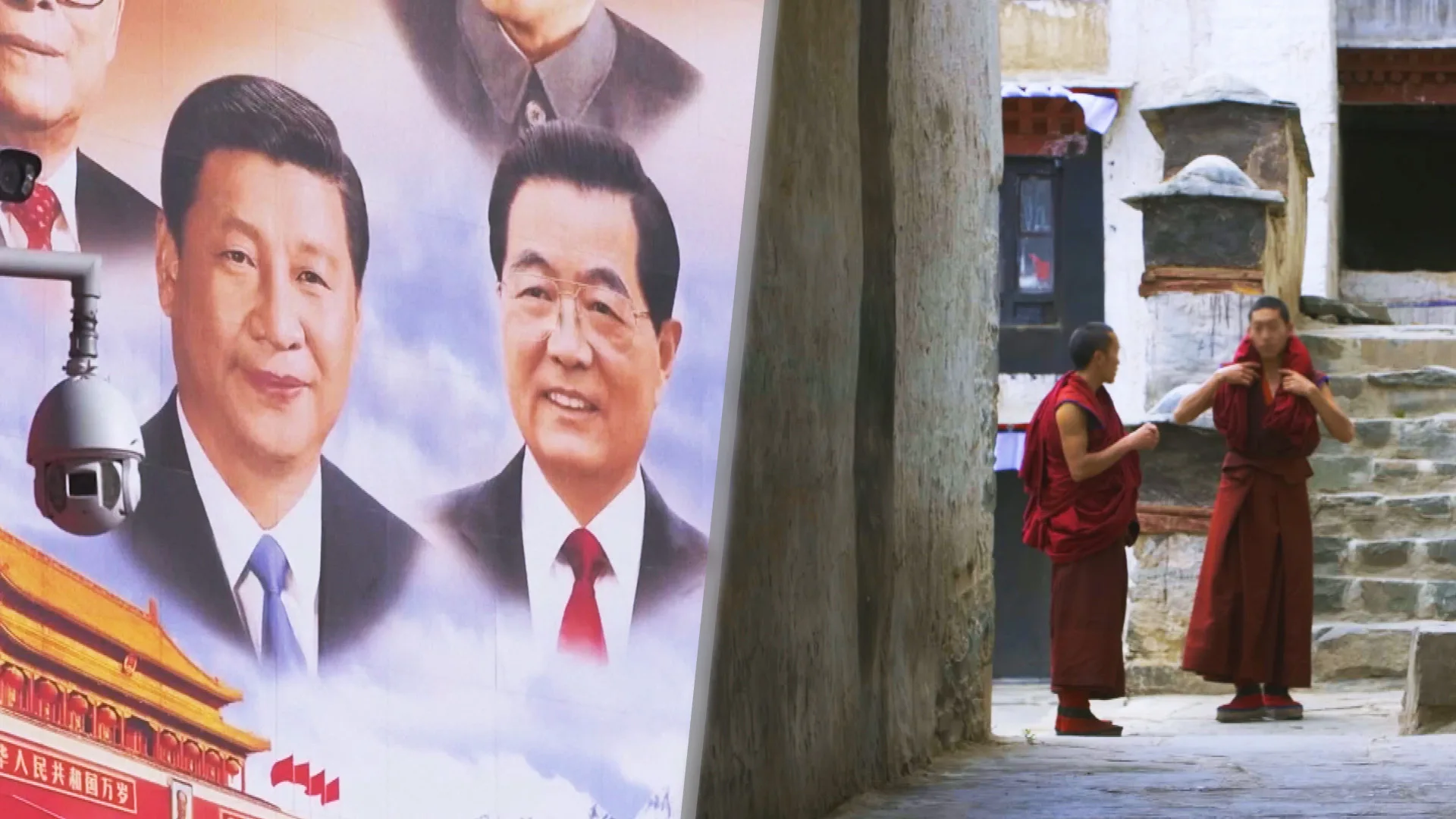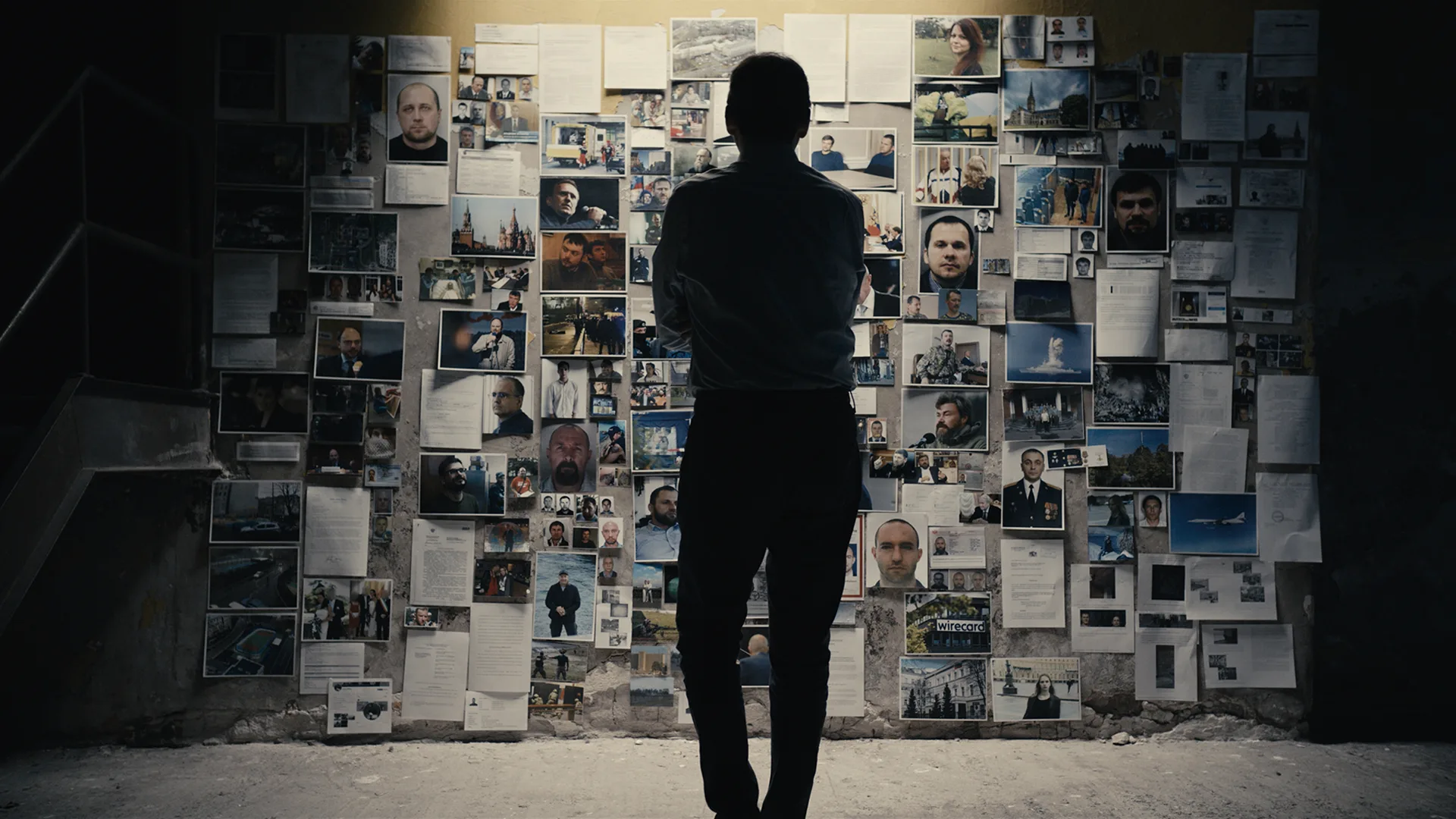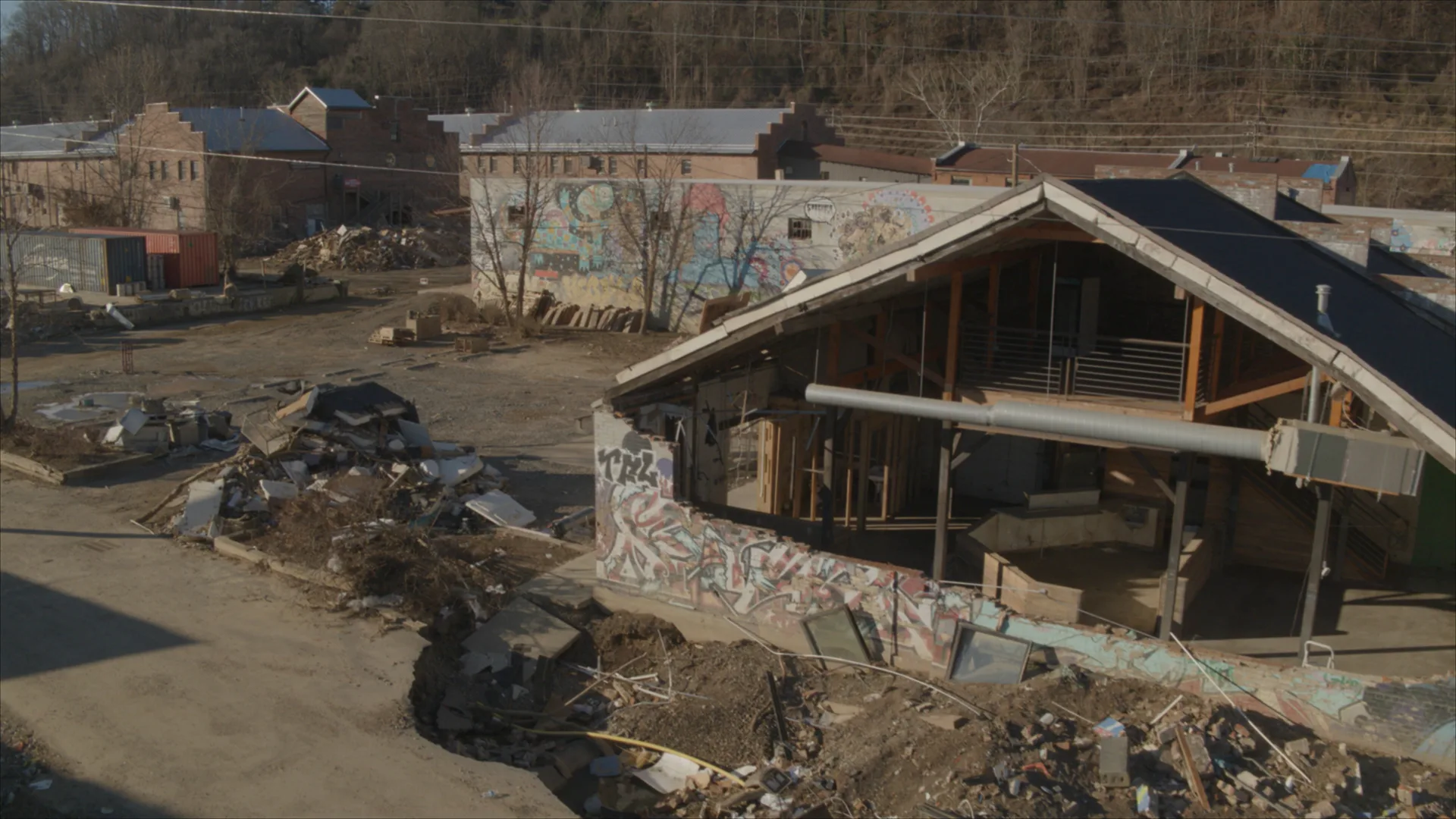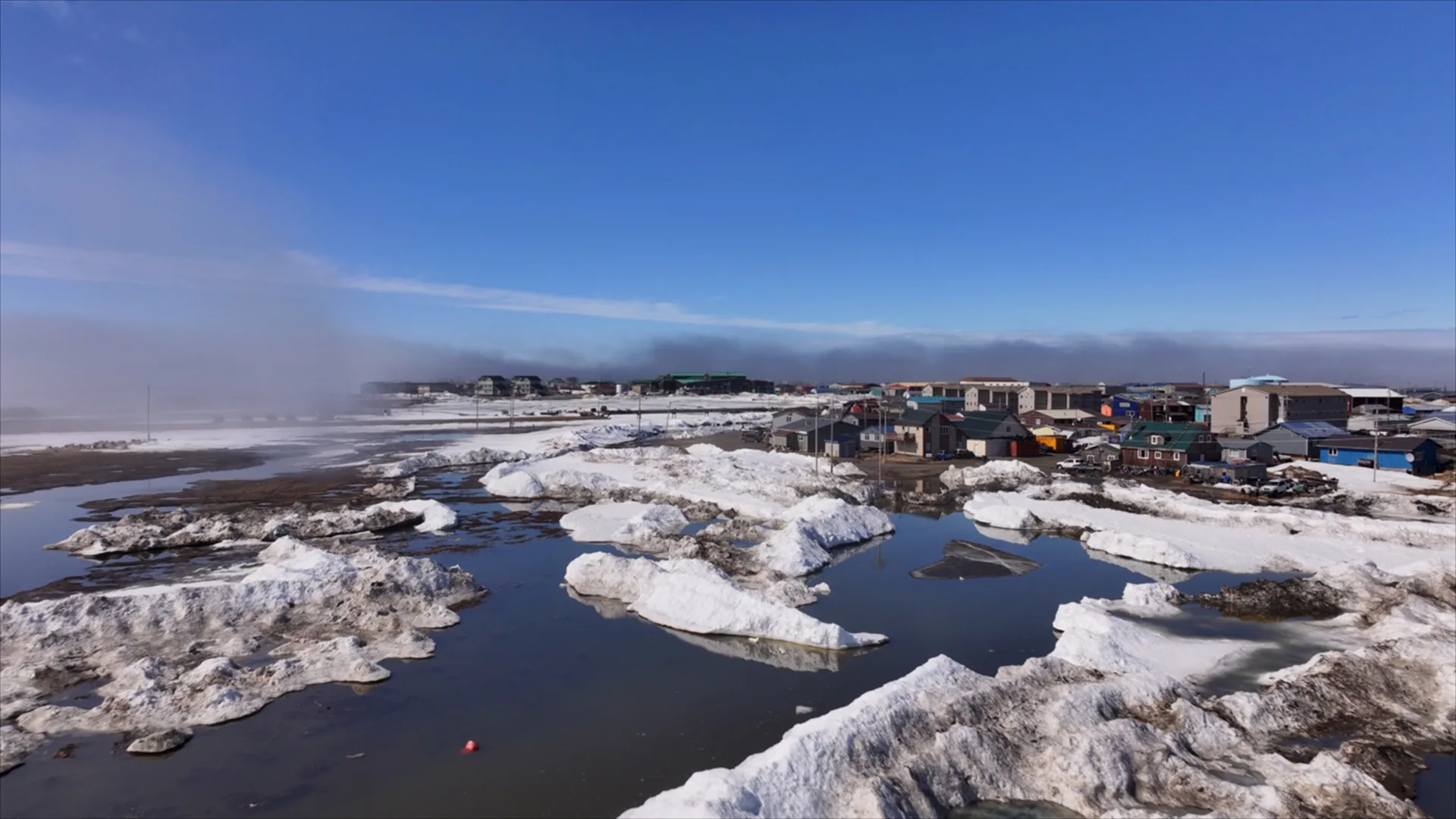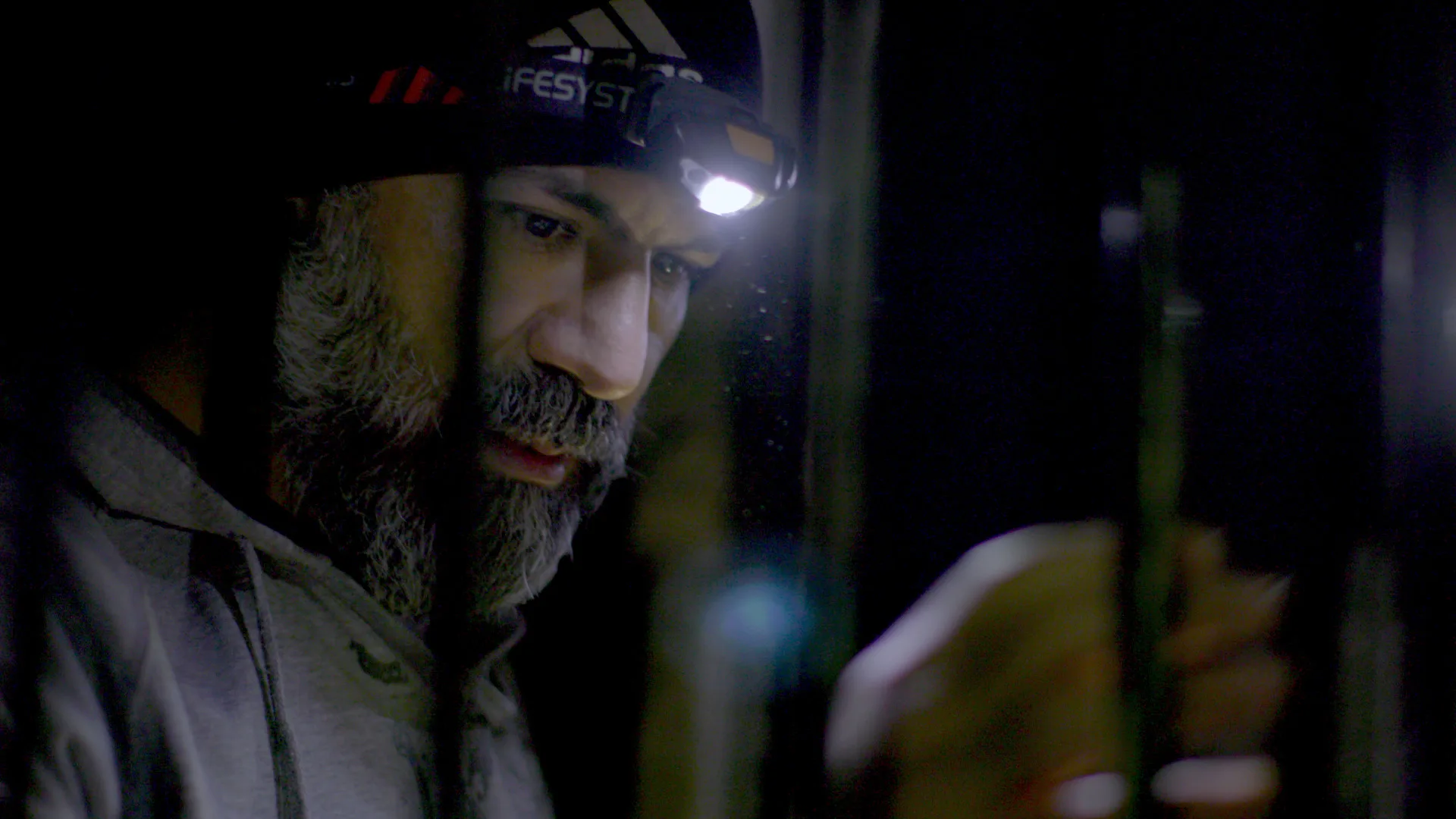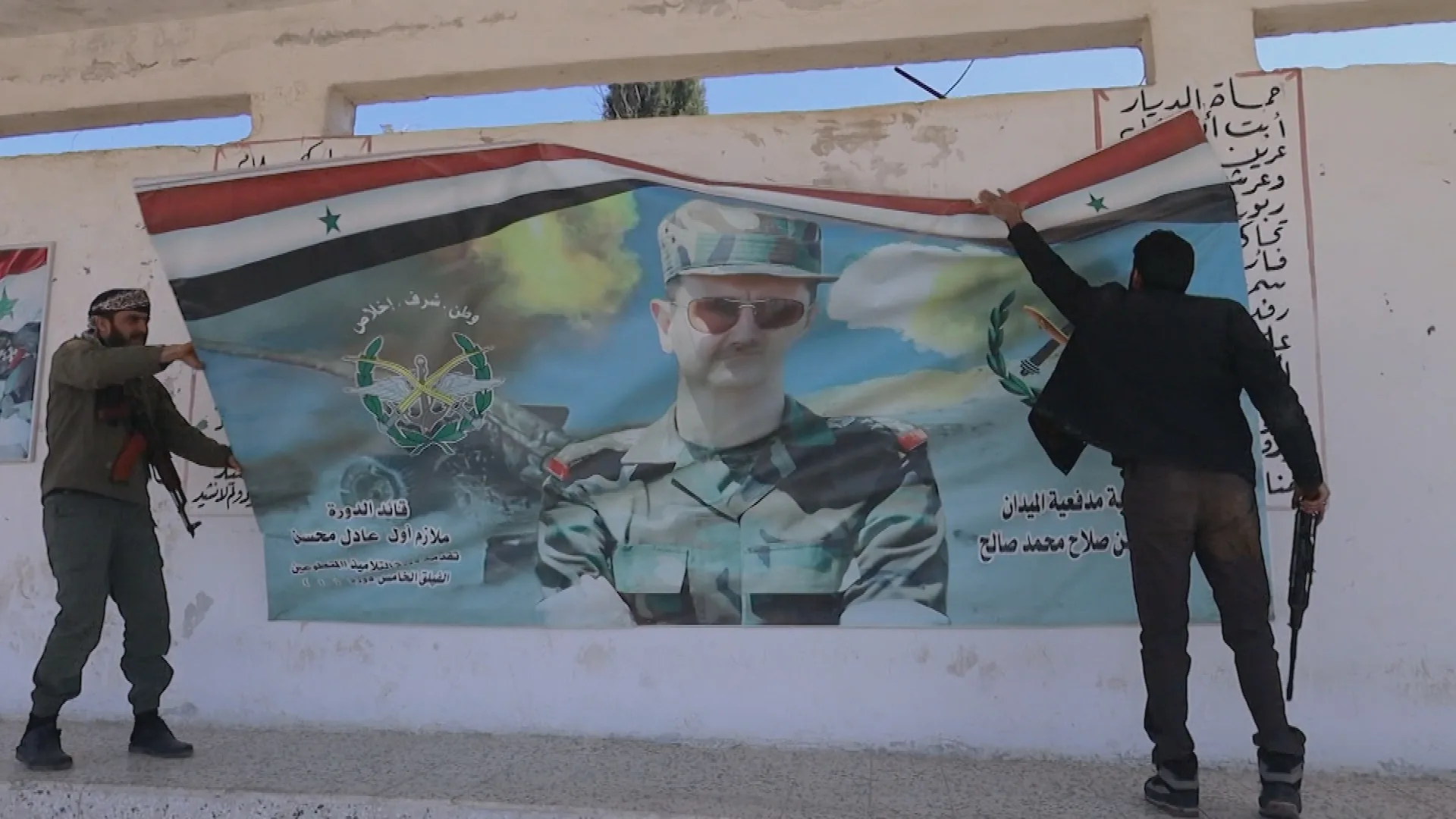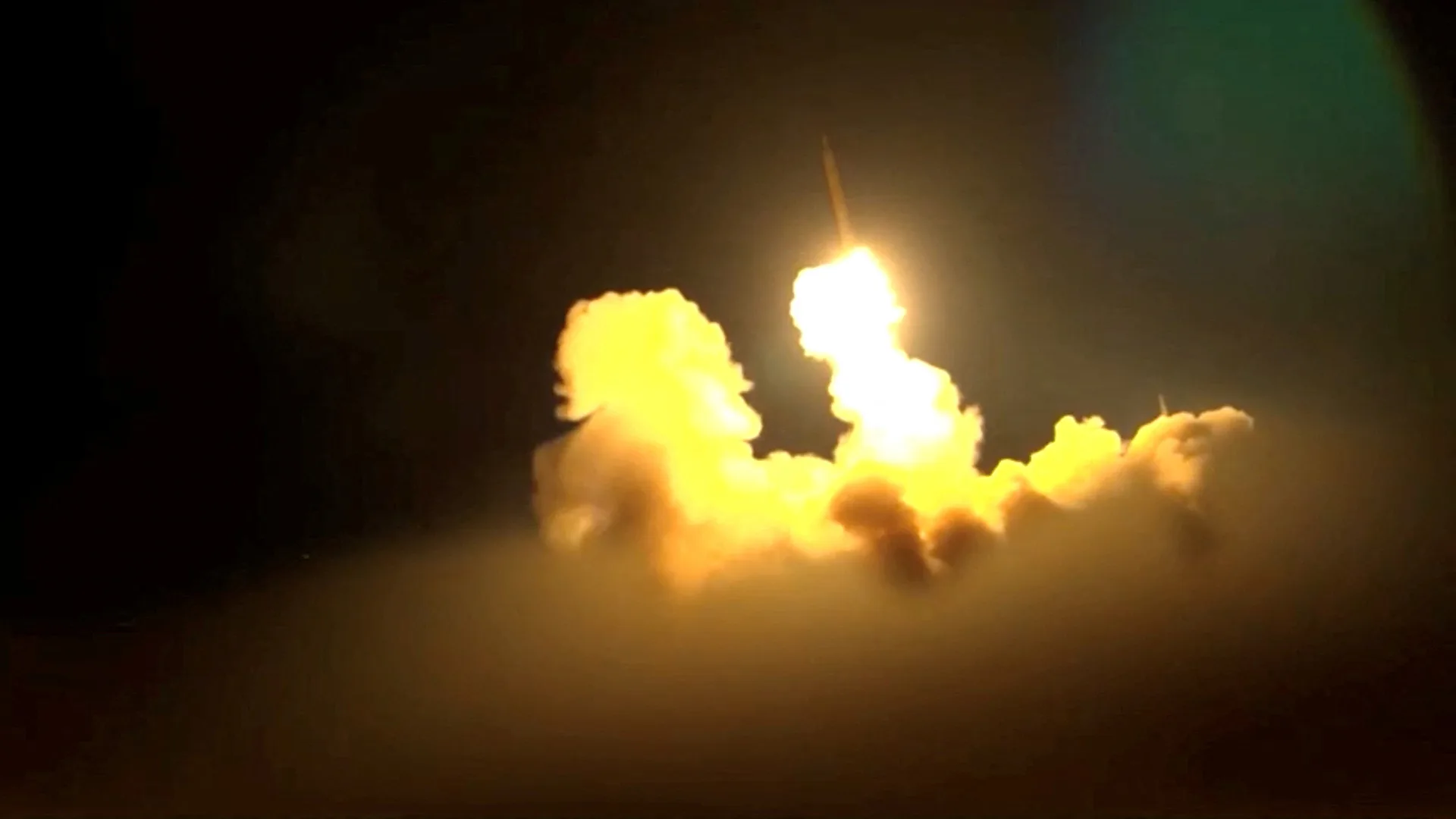Failure at the Fence
December 19, 2023
28m
With The Washington Post, how Israel’s security barrier was breached on Oct. 7
Failure at the Fence
December 19, 2023
28m
Share
A groundbreaking visual investigation in collaboration with The Washington Post featuring a detailed examination of how Hamas was able to breach Israel’s vaunted security barrier on Oct. 7 and carry out its attack. This special collaboration stems from a Post reconstruction, now deepened with additional on-the ground reporting and riveting interviews that present a remarkable picture of how, as the Post reporters show, Hamas was planning the attack in plain sight, and Israel was blinded to its own vulnerabilities.
Directed by
Produced by
Correspondent
Transcript
Credits
Journalistic Standards
Support provided by:
Learn More
Most Watched
The FRONTLINE Newsletter

How Israel’s ‘Iron Wall’ Crumbled Under Hamas’s Oct. 7 Attack
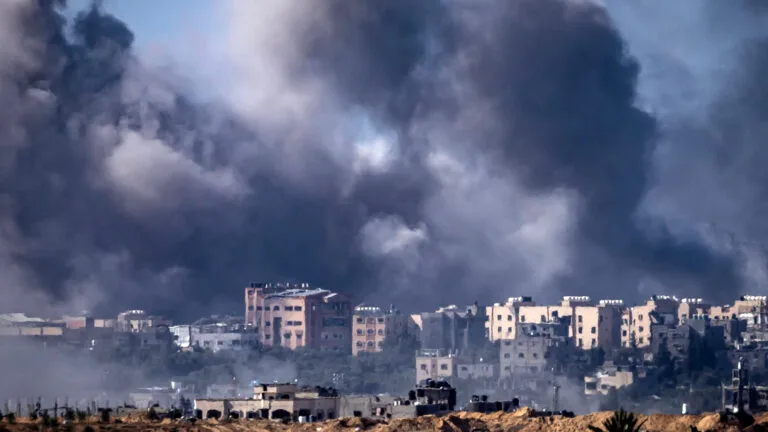
Israel-Gaza War
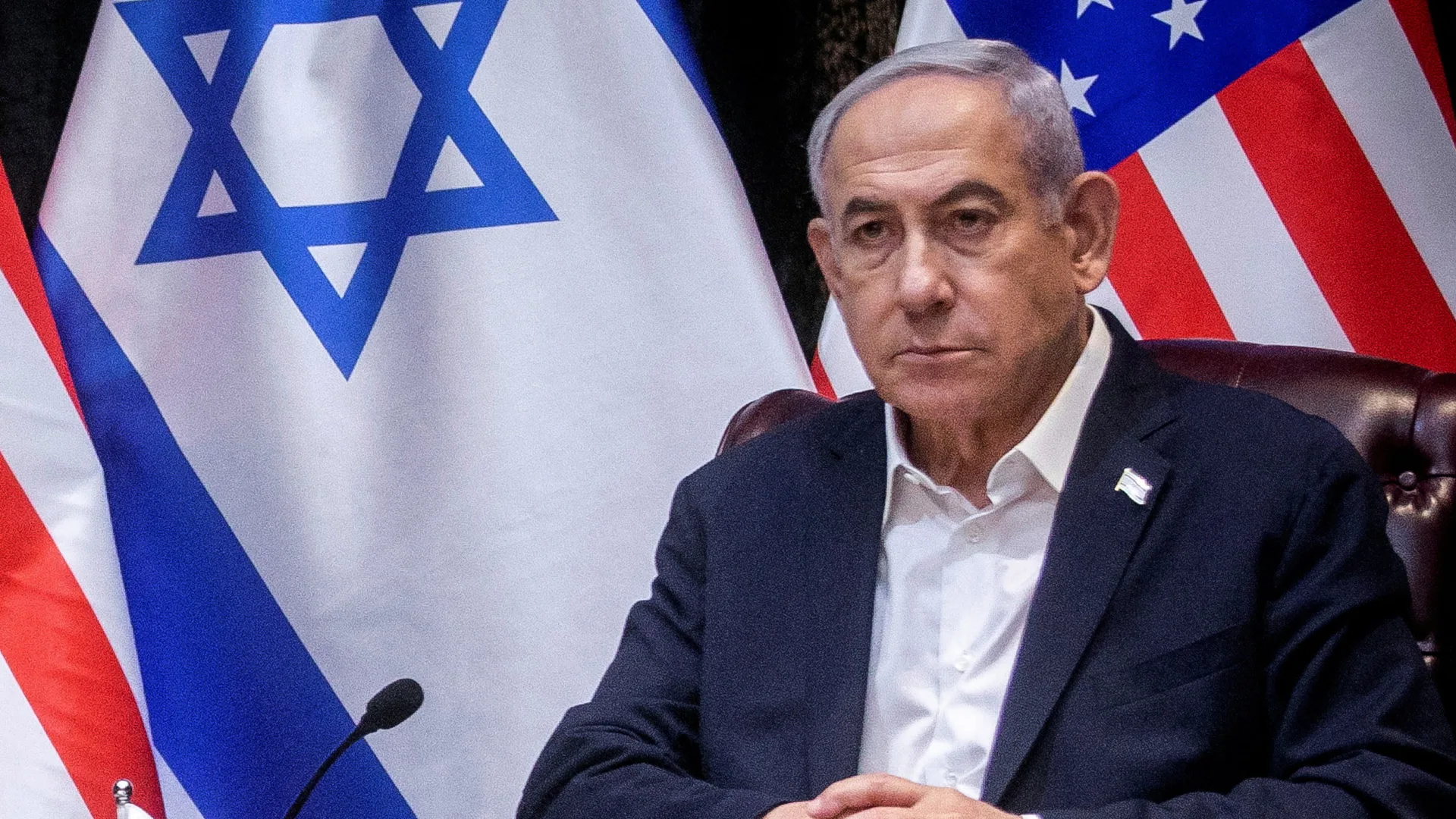
Netanyahu, America & the Road to War in Gaza
Related Stories

How Israel’s ‘Iron Wall’ Crumbled Under Hamas’s Oct. 7 Attack

Presenting Two Probing Documentaries on the Israeli-Palestinian Conflict

Israel-Gaza War

Tracking Damage Within the Gaza Strip
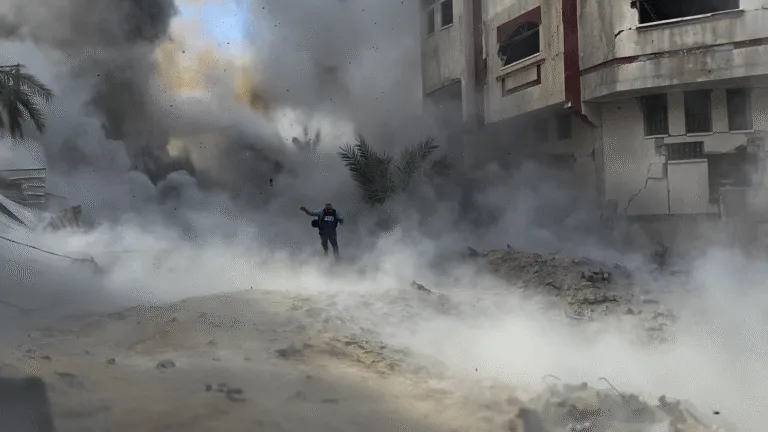
Amid News of a Ceasefire Deal in the Israel-Hamas War in Gaza, Explore the Conflict’s Roots and Ramifications
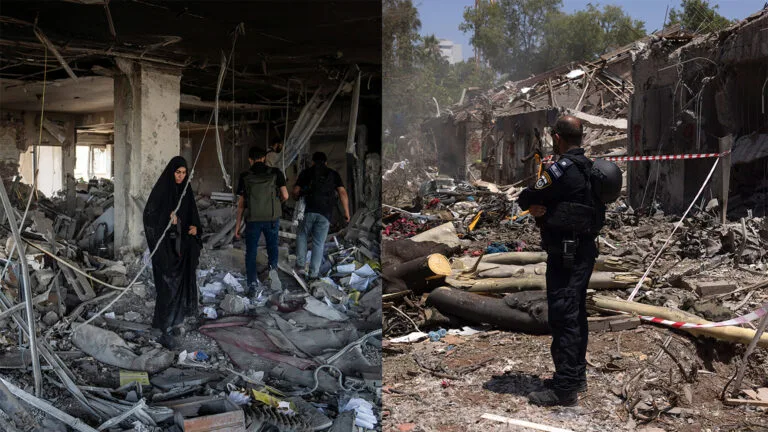
The Iran-Israel Conflict and the U.S. Role: 11 Documentaries to Watch

Netanyahu, America & the Road to War in Gaza
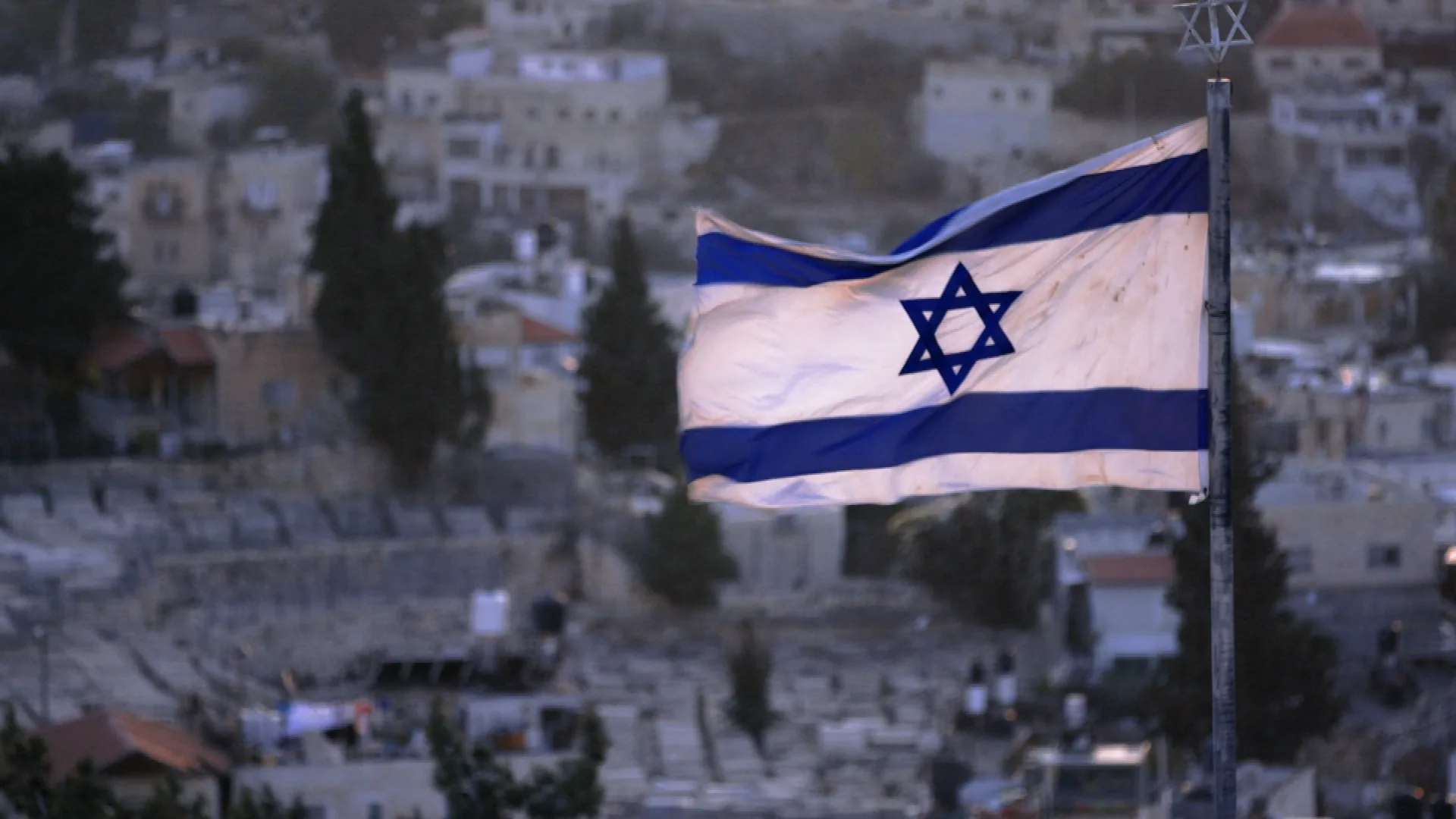
Israel’s Second Front
Related Stories

How Israel’s ‘Iron Wall’ Crumbled Under Hamas’s Oct. 7 Attack

Presenting Two Probing Documentaries on the Israeli-Palestinian Conflict

Israel-Gaza War

Tracking Damage Within the Gaza Strip

Amid News of a Ceasefire Deal in the Israel-Hamas War in Gaza, Explore the Conflict’s Roots and Ramifications

The Iran-Israel Conflict and the U.S. Role: 11 Documentaries to Watch

Netanyahu, America & the Road to War in Gaza

Israel’s Second Front
This program contains graphic imagery which may not be suitable for all audiences. Viewer discretion is advised.
Kfar Aza, Israel
November 2023
ISRAEL LENDER, Kfar Aza resident:
More than 20 years, we are suffering from rockets here.
JON SWAINE, The Washington Post:
Before Oct. 7, had anyone intruded? Had they come into the kibbutz? Or was that the first day?
ISRAEL LENDER:
This is the first time.
JON SWAINE:
I met Israel Lender in Kfar Aza, near the border with Gaza, in the weeks after the Hamas massacre that left around 60 of his neighbors dead.
ISRAEL LENDER:
This is my house. You see now they covered all the glasses was broken. From here they can see all the streets.
JON SWAINE:
So they came here. They went on your roof?
ISRAEL LENDER:
Yes.
JON SWAINE:
So they could have a view of the rest of the kibbutz.
He told me Hamas gunmen stormed his house shortly after sunrise and turned it into a sniper’s nest. He hid with his wife in a nearby room for 36 hours.
ISRAEL LENDER:
The door was closed, the windows were closed and the glass was open. So I could hear everything.
Hamas body camera
ISRAEL LENDER:
Terrible. You can’t think about it.
You can’t believe it. You can’t believe it. You can’t imagine it. What they did here, nobody can do. They build a big wall, they said to us 40 meters in the ground, with the sensors that nobody can—in 6 meter up.
JON SWAINE:
They said this will protect you.
ISRAEL LENDER:
Yeah. We believed that this can protect us.
JON SWAINE:
They just broke through. They came through.
ISRAEL LENDER:
They came through.
Pro-Hamas Telegram channel
MALE VOICE ON RADIO:
[Speaking Arabic] Rocket barrages are being fired right now at the occupied cities. May God empower and grace the holy warriors. The resistance is now inside the occupied territories.
JON SWAINE:
On the morning of Oct. 7, more than a thousand fighters from the Palestinian militant group Hamas broke through the 20-foot high barrier that has long separated Israel from the Gaza Strip, a densely populated enclave that is home to more than 2 million people.
The 40-mile long barrier is outfitted with cutting-edge surveillance tools, a deep underground concrete layer to block Hamas tunnels, and remote-control machine guns above ground. After a billion-dollar upgrade in 2021, Israeli officials dubbed it “the Iron Wall”
Dec. 7, 2021
BENNY GANTZ, Israeli Defense Minister, 2020-22:
[Speaking Hebrew] We erected a wall of iron, concrete and sensors between the terror organization and the residents of Israel’s south.
JON SWAINE:
But in a matter of minutes, Hamas was able to breach the fence in around 30 locations, the start of what would become the deadliest single assault in Israel’s history. Around 1,200 people were killed; 240 taken hostage.
The attack triggered a catastrophic war in Gaza that has killed thousands of Palestinians so far. Israel has vowed to destroy Hamas, which has controlled the territory for years.
JOYCE SOHYUN LEE, The Washington Post:
Broadly, the fighters entered at 6:40 a.m.
JON SWAINE:
And that’s the same incident, just from the other side of the street.
JOYCE SOHYUN LEE:
Exactly.
JON SWAINE:
Soon after the Oct. 7 attack, The Washington Post began investigating how the so-called Iron Wall could have failed so spectacularly. Our team of reporters analyzed hundreds of videos, photos and audio recordings from before, during and after the attack. With FRONTLINE, we spoke with witnesses on the ground.
MALE SPEAKER:
We got hit with the first RPG.
JON SWAINE:
We examined maps and planning documents recovered from Hamas fighters. We took the visual evidence from Oct. 7 and mapped it across southern Israel and inside the Gaza Strip, sometimes using the position of the sun to estimate when key events occurred. What we found was a fragile barrier that gave Israel a false sense of security, leaving it blind to its own vulnerabilities and to the meticulous plan taking shape on the other side of the fence.
The attack began at dawn, around 6:15 a.m. Videos recovered from Hamas fighters show them setting off from Gaza and heading towards the fence, which has long been resented by Gazans who’ve been penned in by it.
People along the road cheered them on.
Around 6:30, as fighters made their way to the fence, Hamas began firing a barrage of thousands of rockets at targets across the barrier. In just the first five minutes of the attack, there were red alerts from more than 30 communities near the Israeli side of the wall.
In Kibbutz Erez, less than a mile from the barrier, Ben Sadan, a member of the community security, had just woken up for an early morning bike ride.
BEN SADAN:
[Speaking Hebrew] 6 a.m., coffee, I sit at the table. 6:30, a rocket barrage, and red alert—insane, insane. We don’t remember anything with this intensity.
JON SWAINE:
So over there we can see Gaza. And the security fence, you can see it running along there, and there’s the towers with the machine gun.
BEN SADAN:
Yeah. There’s the border. On the left side it’s Gaza. On the right side, Israeli.
JON SWAINE:
And I think some of the earliest rockets came over just around here.
BEN SADAN:
All around. All around. [Speaking Hebrew] You stand here and you can see everything. Rockets heading north, rockets landing here, RPGs. Absolutely everything. The sky is on fire. Just on fire.
JON SWAINE:
From this hilltop the next wave of Hamas’ attack became visible: reconnaissance fighters on paragliders, soaring over the wall under cover from the rockets. Videos we obtained show them landing in communities inside Israel, the culmination of a plan that had been years in the making—and that, as we discovered, had been brewing in plain sight.
JOYCE SOHYUN LEE:
When I first saw this video, I was like, oh, this is video from day of. How did they get this produced out so quickly? And once you look closer, oh, it’s obviously a training video.
Hamas training video
JON SWAINE:
Our investigation found multiple videos recorded by Hamas detailing their planning measures. Some were posted on social media before the attack, visible to all. We found videos of militants training for attacks on mock-ups of Israeli compounds. Videos posted soon after the attack showed they had also been practicing the use of paragliders. Hamas had also been expanding their training camps, activity that was visible in widely available online maps.
But this evidence was largely ignored or dismissed by Israeli intelligence and the military, our investigation found.
Michael Milshtein is a former head of the Palestinian department for Israel’s military intelligence. He has been strongly critical of their missteps leading up to Oct. 7.
MICHAEL MILSHTEIN, Fmr. IDF intelligence, Palestinian affairs:
Israel knew about the whole plans because Hamas didn’t hide them. It was on public, on their Internet sites, on their TV, everywhere. From the operational tactic point of view, October the 7th, we, Israel, IDF didn’t face any surprise over there.
JON SWAINE:
Were there specific warnings that something like this could be coming?
MICHAEL MILSHTEIN:
Well, according to reports in Israeli media, there was very focused reports about the whole plan, the whole offensive plan that promoted. And actually the data, the reports itself were known even to senior ranks, senior figures in IDF intelligence. But the basic assumption, the basic assessment in the intelligence was that those are only trainings or theoretic attempts. But we are not speaking about something which is very feasible.
JON SWAINE:
The heart of Hamas’s operation on Oct. 7 was the stage that their videos call “the blinding plan,” aimed at severing the connections to Israel’s surveillance and security system.
Israel uses seven Skystar surveillance balloons to monitor hotspots along the Gaza fence. The balloons carry a long-range, 360-degree camera.
Skystar promotional video
JON SWAINE:
But the model of camera that Israel uses on the balloons is relatively old and is no longer made. On the morning of Oct. 7, we found that three of the seven balloons were in need of maintenance and out of service.
Video from the attack shows one of the remaining balloons. We were told it had been cut loose by the militants.
The balloons are part of a system that includes surveillance and weapons towers. Visuals and other data from the towers are fed into monitoring centers inside Israel, including one near Re’im.
ROTEM HOROWITZ, Former IDF soldier:
It doesn’t matter how many combat soldiers they are, if they don’t know where the enemy is, they can’t fight the enemy.
JON SWAINE:
Rotem Horowitz spent two years monitoring the camera feeds at Re’im before completing her military service last spring.
Three of the balloons were out of service on the day. They weren’t working. The cameras needed to be repaired, but they’re old and out of production.
ROTEM HOROWITZ:
Yeah.
JON SWAINE:
Is that a big problem?
ROTEM HOROWITZ:
I personally think it is. They were first brought into use in 2006. And ever since then, it’s kind of been the same system. It doesn’t work very well during rough weather, like only when weather conditions are perfect.
JON SWAINE:
Do you remember people sending up warnings that these buildings are getting out of date? Some of them aren’t working. They’re not working in bad weather.
ROTEM HOROWITZ:
Yeah, I know that the surveillance operators on the balloon have, as long as I’ve been there, I served there, we’ve been complaining about how the balloons see and, in general, their quality ever since I can remember.
JON SWAINE:
The balloons are supplemented by surveillance towers, containing HD cameras, laser and infrared sensors, and radar, and can see people for almost six miles away, according to the manufacturer.
Other structures called Sentry Tech towers are topped with “Samson” weapons stations, which feature machine guns and sensors. They’re positioned every few hundred yards along the barrier and outside key military facilities and are nicknamed “Roeh-Yoreh,” Hebrew for “Sees-Fires.”
Once the sensors send an intruder alert, IDF personnel can fire the 50-caliber machine guns by remote control.
ROTEM HOROWITZ:
We have to really make sure that we can firmly see a weapon and a threat before we can actually do anything with it. So usually if someone’s getting close to the fence, we use it to kind of not shoot at them, but shoot near them, to kind of scare them away. Like, don’t come close. We’re not going to touch them if they don’t come close. The moment they’re showing that they’re a threat and they’re coming close, that’s when we start to act.
FEMALE VOICE ON RADIO:
[Speaking Hebrew] In front of the 50 line it shows that there are currently 12 people running towards the fence. There are two motorcycles, roger? We need an answer.
JON SWAINE:
Video from one of the sentry towers on Oct. 7 shows it firing on a group of Hamas fighters as they approached the fence near Kissufim.
MALE VOICE ON RADIO:
[Speaking Hebrew] Commander, commander, we are at war!
JON SWAINE:
But that’s not what happened elsewhere. Hamas fighters had come prepared to evade the towers, and documents recovered after the attack reveal a deep and detailed knowledge of Israeli defenses. In this one, they specifically note the locations of surveillance systems. Fighters also carried with them open-source satellite imagery annotated with coded locations of key structures along the wall.
Armed with this information, Hamas carried out their blinding plan using unmanned drones equipped with cameras to drop explosives on installations like this surveillance tower near the community of Be’eri.
Of the Sentry Tech towers marked on the map, we verified videos of at least two of them being attacked. This one, located near Kfar Aza, was attacked twice by Hamas drones. Incendiary explosive devices with fuses were dropped on the camera and weapons system.
Oct. 7, 2023
Hamas training video
JON SWAINE:
Some of the training videos we found posted online show that these drone maneuvers had been well-rehearsed. Other videos from the 7th show towers being attacked with rocket-propelled grenades and gunfire. It’s hard to tell just from the video evidence how badly damaged the installations were.
Hi. Thank you so much for your time, I really appreciate you coming and seeing us tonight.
But retired colonel Dany Tirza, the former head of the Israeli military’s fence administration, told me Hamas’ blinding plan drastically undermined Israel’s ability to respond to the attack.
DANY TIRZA, Former IDF fence chief:
That was a real failure because they succeeded to cut the command system. The command system of all this area was built on one control system, and they succeeded to cut it. And therefore we couldn’t use helicopters because according to the Israeli system, the helicopters cannot shoot if there is not someone on the ground that show them where are your forces, where are the other side forces? So they came, but they couldn’t shoot because they didn’t know who and what is going on there.
JON SWAINE:
In 2021, when the latest upgrade was unveiled, some of the political and military leaders made very firm, quite bold claims for the barrier. They said this will protect the residents in the south. Hamas will not get in, and—was that a mistake to promise those things?
DANY TIRZA:
Of course it was a mistake. We really thought that we are building a very good infrastructure that will help to save the lives of the Israelis. Unfortunately, it didn’t work.
JON SWAINE:
He said the attack exposed a fundamental misconception about the fence.
DANY TIRZA:
It was built against people that will try to cross it. It wasn’t built against army or against a lot of people that are coming in one time.
JON SWAINE:
Were you surprised, you personally, surprised at how quickly they were able to blast through and make it into the bases and beyond?
DANY TIRZA:
I myself was not surprised that they crossed it so quickly because the fence is not built for such frighten. It was built for another thing. If you want to stop an army, you are doing it with army tools. If you want to stop one, two, three terrorists, you’re doing it with soft tools like what we did. We didn’t thought that there will come a terror army from the other side that were crossing at the same time, big groups, and we were not prepared for it.
JON SWAINE:
The Israeli government says Hamas broke through the fence in around 30 locations. We obtained videos from 14 of them. The videos show trained Hamas fighters using explosives and munitions to blow holes in the fence and its concrete barriers. It took them only minutes.
By around 6:40 a.m., Israel’s Iron Wall had largely crumbled.
In the weeks that have followed, Israel’s military and intelligence establishments have come under intense criticism. A spokesman for the Israeli Defense Forces, Lt. Col. Peter Lerner, agreed to speak with me at a military base in Tel Aviv.
Hamas has published several training videos which appear to show fighters in the months before practicing specific tactics that were then used on the day, blowing up fences, paragliding and so on. Did Israel not see this?
COL. PETER LERNER, IDF spokesman:
I mean, we’re looking at what exactly transpired before the 7th of October, and there will be a time when the IDF will be doing that soul-searching that is required. The IDF will review that, and those that need to take responsibility will have to take responsibility.
JON SWAINE:
What do you think Oct. 7 says about the integrity of that barrier?
PETER LERNER:
So the barrier itself is a concept that was perceived to be a strong line of defense. But any line of defense can only withhold a certain amount of pressure. I think the question is not necessarily what is the barrier, but what was the threat assessment? And these are the types of questions that we will be asking. These are the types of questions that the answers to the residents of those towns of the kibbutzim, we owe them clarification and accountability for the failure of not the fence, but the whole concept of operations. And this, I think, is what the IDF will be looking into when the war is over.
JON SWAINE:
The Hamas fighters that broke through the fence that morning were bound for the military bases and communities along the border. One group headed for Kibbutz Erez, where Ben Sadan and the rest of his security team had already armed themselves and watched with dismay as the fighters kept coming
BEN SADAN:
[Speaking Hebrew] So the terrorists were here, just outside the gate. They were on the hill on the left, down that row of trees.
JON SWAINE:
And they’re carrying weapons?
BEN SADAN:
[Speaking Hebrew] Yes, plenty. An enormous amount, enormous.
JON SWAINE:
What kinds of things are they carrying?
BEN SADAN:
[Speaking Hebrew] AK-47, RPG, grenades. Explosives. Explosives designed specifically for fences, to breach fences.
JON SWAINE:
How many of them were there? How many of your men were there?
BEN SADAN:
[Speaking Hebrew] They were 20-30 terrorists with endless supplies of weapons and ammunition. They had everything. We were eight at that point. All we had were guns with iron sights and very little ammunition.
JON SWAINE:
He told me the combat lasted three hours.
And after these few hours of fighting, what happened next?
BEN SADAN:
[Speaking Hebrew] It just stopped. Just stopped. Both the fighting here and the fighting over there. There was just silence. We didn’t leave the field. We stayed there. And at that location. Because we didn’t know what was happening. But it just went quiet. It stopped.
JON SWAINE:
Sadan and his team had avoided the potential massacre.
MALE NEWSREADER:
Breaking news out of Israel.
FEMALE NEWSREADER:
Chaos erupting in Israel.
JON SWAINE:
But other communities were overrun.
FEMALE NEWSREADER:
Hamas militants currently attacking citizens.
FEMALE NEWSREADER:
Shooting at people on the streets, attacking troops.
JON SWAINE:
At 7:01, the first Hamas gunmen broke through the gate at Kfar Aza.
FEMALE REPORTER:
We are in Kibbutz Kfar Aza.
JON SWAINE:
More than 250 others would follow throughout the morning,
FEMALE REPORTER:
You can see this massacre. It smells of death here.
JON SWAINE:
Some of the fighters wore body cameras, and the videos recovered later show the rampage through the kibbutz.
Hamas body camera
YURI LEVIN:
So this is my place.
JON SWAINE:
Yeah.
YURI LEVIN:
What’s left of my house. I don’t have a roof. and look. everything is black and burned.
JON SWAINE:
Yuri Levin witnessed the violence that day and told me he’d barely escaped being kidnapped and taken to Gaza, a fate that befell many of his neighbors.
YURI LEVIN:
He is kidnapped. He is also kidnapped.
JON SWAINE:
And these are all friends of yours? You knew everyone?
YURI LEVIN:
They kidnapped. She kidnapped. He is murdered. He is also kidnapped. Murdered, and two of them kidnapped, I think. Yes, not think, I know. This is friends of me.
JON SWAINE:
Across the street, a group of his friends were returning home for the first time since the attack.
YURI LEVIN:
[Speaking Hebrew] First time back here?
MALE RESIDENT:
[Speaking Hebrew] First time.
FEMALE RESIDENT 1:
[Speaking Hebrew] We haven’t been back since.
MALE RESIDENT:
It’s the first time I’m . . . You know, I saw it in videos and stuff, but seeing it for the first time with my own eyes . . . It’s not . . . No, bro. You can’t. You can’t understand.
There are blood splatters. It was on the magnets.
FEMALE RESIDENT 1:
Magnets with blood. On the shoes.
MALE RESIDENT:
On the floor.
FEMALE RESIDENT 2:
It’s hard to believe there used to be life here. Hard to believe. I don’t know what to say.
JON SWAINE:
Israel, could you tell me about who these people are in the pictures?
ISRAEL LENDER:
These pictures? This is our village team, football team. They are called the Fox of the Village.
JON SWAINE:
The young men?
ISRAEL LENDER:
Of the Kfar Aza village. Some of them died.
JON SWAINE:
Show me.
ISRAEL LENDER:
Some of them are kidnapped. He’s died. And this is in Gaza. These two brothers are in Gaza. His parent’s house—
JON SWAINE:
Gone.
ISRAEL LENDER:
—was destroyed. He’s lost his mother and father and his brother. Almost everyone has a connection for who’s murdered, who’s kidnapped, who’s injured. Everyone from here.
JON SWAINE:
It’s touched the whole community.
ISRAEL LENDER:
Yeah.
WRITTEN, PRODUCED & DIRECTED BY Gabrielle Schonder
CORRESPONDENT Jon Swaine
REPORTED BY Joyce Sohyun Lee Jon Swaine Shakked Auerbach
PRODUCER Shakked Auerbach
EDITORS Fanny Lee Sarah Cahlan
SENIOR PRODUCER Frank Koughan
CINEMATOGRAPHY Timothy Grucza
ADDITIONAL CAMERA Joyce Sohyun Lee
SOUND Michael Legum Ran Tsrouya
ASSOCIATE PRODUCER Kitty Samuels
ARCHIVAL PRODUCER Alana Schwartz
ONLINE EDITOR/COLORIST David Bigelow
SOUND MIX Christopher D. Anderson, C.A.S.
TRANSLATION Harvey N. Bock Kaya Sherchan
DRIVER Ron Cohen
SPECIAL THANKS Shai Gal Zachary Heinzerling
ARCHIVAL MATERIAL Abdallah Alattar via Storyful AFPTV via Getty Images Associated Press Eddie Gerald via Getty Images Jon Gerberg OpenStreetMap.org/copyright Screenocean/Reuters Zoeann Murphy
ADDITIONAL MATERIAL BBC News CNN FOX News i24 News Mohamed al-Sersawy NBC News RT Skystar South First Responders WION Younis Tirawi
FOR THE WASHINGTON POST
MOTION GRAPHICS EDITOR Brian Monroe
ADDITIONAL REPORTING Sarah Cahlan, Chris Dehghanpoor, Jon Gerberg, Artur Galocha, Samuel Granados, Evan Hill, Meg Kelly, Loveday Morris, Zoeann Murphy, Imogen Piper, Shira Rubin, Aaron Steckleberg and Laura Tierney
SENIOR PROJECTS EDITOR Courtney Kan
EXECUTIVE PRODUCER, VISUAL FORENSICS Nadine Ajaka
DEPUTY INVESTIGATIONS EDITOR Eric Rich
DIRECTOR OF VIDEO Micah Gelman
DEPUTY MANAGING EDITOR Craig Timberg
MANAGING EDITOR Scott Vance
MANAGING EDITOR Matea Gold
EXECUTIVE EDITOR Sally Buzbee
ORIGINAL PRODUCTION FUNDING PROVIDED BY CPB, Abrams Foundation, Park Foundation, John D. and Catherine T. MacArthur Foundation, Heising-Simons Foundation, FRONTLINE Journalism Fund with major support from Jon and Jo Ann Hagler through the Jon L. Hagler Foundation and additional support from Joseph Azrack and Abigail Congdon and Koo and Patricia Yuen.
FOR FRONTLINE
EDITOR & POST PRODUCTION COORDINATOR Tim Meagher
SENIOR EDITOR Barry Clegg
EDITOR Brenna Verre
EDITORS Christine Giordano Alex LaGore Joey Mullin
PRODUCTION ASSISTANT Stevie Jones
FOR GBH OUTPOST
EDITOR Deb Holland
SENIOR DIRECTOR OF PRODUCTION TECHNOLOGY Tim Mangini
SERIES MUSIC Mason Daring Martin Brody
EXECUTIVE ASSISTANT Ellen O’Neill
OPERATIONS SPECIALIST Will Farrell
DIRECTOR OF IMPACT AND EXTERNAL RELATIONS Erika Howard
SENIOR DIGITAL WRITER Patrice Taddonio
PUBLICITY & AUDIENCE ENGAGEMENT COORDINATOR Julia Heffernan
DIGITAL PRODUCER / EDITOR Tessa Maguire
ASSOCIATE DIRECTOR OF PUBLICITY, COMMUNICATIONS & AWARDS Anne Husted
PODCAST PRODUCER Emily Pisacreta
ARCHIVES & RIGHTS MANAGER John Campopiano
BUSINESS ASSOCIATE Sean Gigliotti
FOR GBH LEGAL Eric Brass Suzy Carrington Jay Fialkov
SENIOR CONTRACTS MANAGER Gianna DeGiulio
BUSINESS MANAGER Sue Tufts
BUSINESS DIRECTOR Mary Sullivan
SENIOR DEVELOPER Anthony DeLorenzo
LEAD DESIGNER FOR DIGITAL Dan Nolan
FRONTLINE/COLUMBIA JOURNALISM SCHOOL FELLOWSHIPS TOW JOURNALISM FELLOW Kaela Malig
GOGGIN JOURNALISM FELLOW Inci Sayki
FRONTLINE/NEWMARK JOURNALISM SCHOOL AT CUNY FELLOWSHIP TOW JOURNALISM FELLOW James O’Donnell
FRONTLINE/MISSOURI SCHOOL OF JOURNALISM FELLOWSHIP MURRAY JOURNALISM FELLOW Kelsey Rightnowar
FRONTLINE/FIRELIGHT INVESTIGATIVE JOURNALISM FELLOWS Kevin Shaw Débora Souza Silva
ARCHIVAL PRODUCER Coral C. Salomón Bartolomei
EDITORIAL CONSULTANTS Lauren Prestileo Callie T. Wiser
SENIOR DIGITAL PRODUCER / EDITOR Miles Alvord
SENIOR DOCUMENTARY EDITOR & PRODUCER Michelle Mizner
DIGITAL EDITOR Priyanka Boghani
STORY EDITOR & COORDINATING PRODUCER Katherine Griwert
POST COORDINATING PRODUCER Robin Parmelee
SENIOR EDITOR AT LARGE Louis Wiley Jr.
FOUNDER David Fanning
SPECIAL COUNSEL Dale Cohen
DIRECTOR OF AUDIENCE DEVELOPMENT Maria Diokno
SENIOR PRODUCERS Dan Edge Frank Koughan
SENIOR EDITOR & DIRECTOR, LOCAL JOURNALISM Erin Texeira
SENIOR SERIES PRODUCER Nina Chaudry
SENIOR EDITOR INVESTIGATIONS Lauren Ezell Kinlaw
MANAGING DIRECTOR Janice Hui
MANAGING EDITOR Andrew Metz
EXECUTIVE PRODUCER & EDITOR IN CHIEF Raney Aronson-Rath
A FRONTLINE Production with Schonder Productions in association with The Washington Post
FRONTLINE is a production of GBH which is solely responsible for its content.
© 2023 WGBH Educational Foundation All Rights Reserved
Explore
Policies
Teacher Center
Funding for FRONTLINE is provided through the support of PBS viewers and by the Corporation for Public Broadcasting, with major support from Ford Foundation. Additional funding is provided the Abrams Foundation, Park Foundation, John D. and Catherine T. MacArthur Foundation, Heising-Simons Foundation, and the FRONTLINE Trust, with major support from Jon and Jo Ann Hagler on behalf of the Jon L. Hagler Foundation, and additional support from Koo and Patricia Yuen. FRONTLINE is a registered trademark of WGBH Educational Foundation. Web Site Copyright ©1995-2025 WGBH Educational Foundation. PBS is a 501(c)(3) not-for-profit organization.

